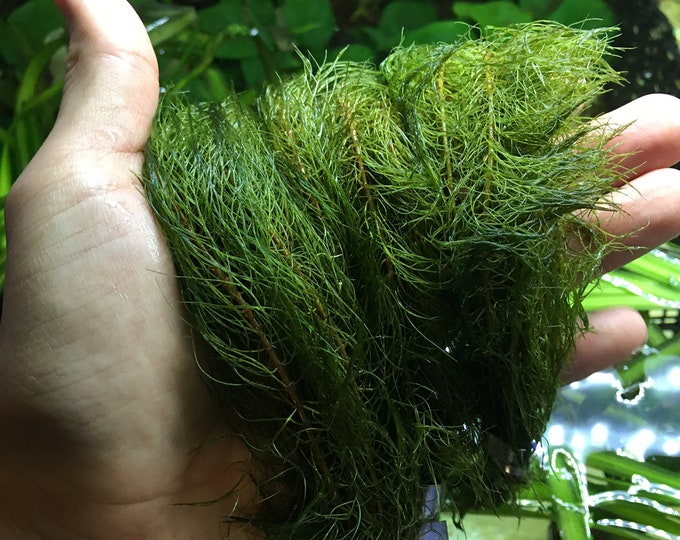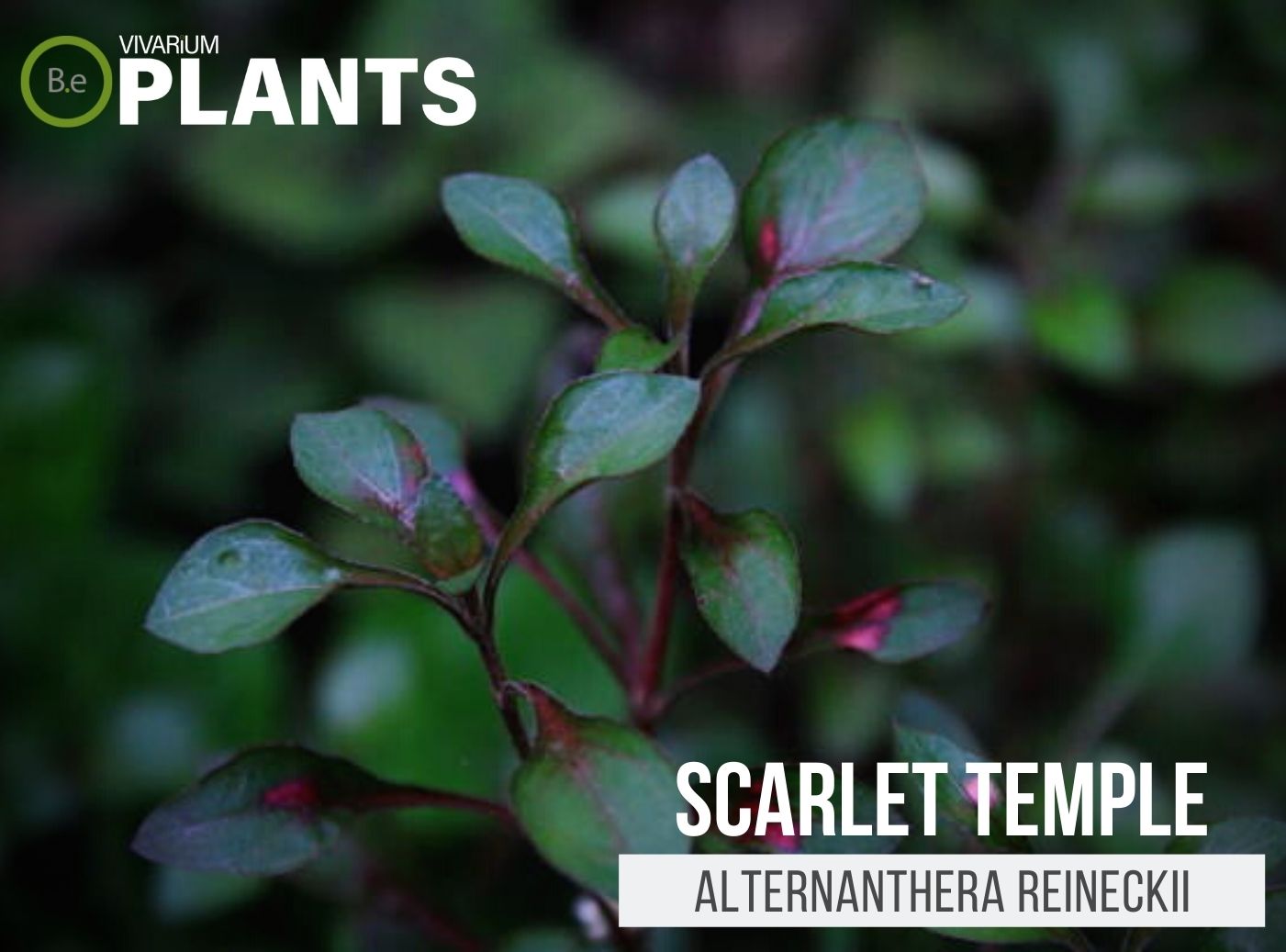Myriophyllum aquaticum, or Parrot’s Feather, is an excellent aquatic stem plant with many benefits.
It is an emergent plant, meaning that it grows partially in water and partially out of it, making it a great addition to natural-looking fish tanks, paludariums, and ripariums.
This plant is low maintenance, hardy, and often used as an aquarium and reptile aquarium cover species due to its lush green foliage.
Quick Stats:
Scientific Name: Myriophyllum aquaticum
Family: Haloragaceae
Common Names: Parrot’s Feather, Millfoil, Featherleaf
Habitat: Marshes, Lakes, Ponds
Height: 24 inches
pH Range: 5 to 7.5
Temperature: 60°F to 70°F
What Is Parrot’s Feather?
Myriophyllum aquaticum, commonly known as Parrot’s Feather, is an evergreen aquatic plant that grows from water in the form of a slender emergent stem.
This plant is native to the South American area with its most common native habitat to be located near the Uruguay River and less common in the Amazon region.


Parrot’s Feather Facts
Parrot’s Feather has had its uses for quite some time historically due to its many medicinal purposes.
Historically, humans would harvest the species to make everything from a remedy for a fever to tonics for kidneys.
Its leaves are considered edible and are produced in outstanding quantities.
Description
Parrot’s Feather can reach as tall as 24 inches out of the water with multiple slender stems that form a dense tuft of foliage.
By nature, the foliage is lush green with narrow sprigs that can be as narrow as one inch.
The local of the plant is how it branches off, making it the ideal choice for filling up gaps in an aquarium.
Habitat
In its original habitats of South America, Myriophyllum aquaticum is found most notably in marshes, ponds, and lakes typically flanked by woodland regions.
In the wild, Parrot’s Feather typically prefers a warm, tropical environment with temperatures ranging from 60°F to 70°F.
pH Preference
Parrot’s Feather will typically prefer a neutral pH level from 5.0 to 7.5.
Though it can survive lower or higher pH levels, long-term growth and optimal health of the plant are achieved by staying within the suggested range.
Vivarium Type
Myriophyllum aquaticum is quite an easy-going species. With that in mind, it will not be too complicated when choosing the type of enclosure it is grown in. It is best to try and replicate the plant’s natural habitat as much as possible.
Doing so will make it easier to provide this foliage plant with its basic needs. The proper setup and theme of the enclosure will make a big difference to the overall look and health of the plant. Be sure to choose setups that are moist and high in humidity.
Here are recommended vivariums it will do well in:
-
- Paludariums – Half aquatic/ half terrain-based enclosure.
- Ripariums – Mostly aquatic-based enclosures with some terrain features present.
- Aquariums – Fully aquatic-based enclosure with little to no dry terrain.
Vivarium Placement
Parrot’s Feather is best utilized in an aquarium to cover the water’s surface.
This plant should not be submerged in water completely, as it prefers to stay partially in and out of the water.
If keeping this plant in an aquarium with fish, it is best to place the plant away from the tank where the fish cannot reach and eat the plant.
Substrate
Parrot’s Feather is perfect for both soil and gravel substrate, depending on the type of vivarium it will be housed in.
Aquatic Substrates like pea-sized gravel and soil should both work.
Lighting
Myriophyllum aquaticum does not have a strict requirement for lighting, being able to adapt to most lighting conditions.
This plant, however, does prefer high aquarium lighting and vibrant colors and should be placed in a spot in the aquarium receiving at least 8 to 10 hours of light a day.
Buy Parrot’s Feather
When buying Myriophyllum aquaticum, there are a few things to keep in mind. Making sure the plant is healthy when purchased is essential for its success in a vivarium or pond. Vegetation that is already in poor conditions will have a very hard time adjusting to new environments.
Click the image below to learn more about the current price and other relative info about this plant.
Parrot’s Feather Care and Propagation
Parrot’s feather is quite a hardy species in a tank and can grow rather quickly, so propagation is easily achieved here.
This species can be propagated through cuttings as well as asexual reproduction through runners.
Parrot’s Feather Plant requires both low and high levels of nitrogen and phosphate and should come with a basic aquarium fertilizer set.
How to Grow
To acquire enough growth in the aquarium for full coverage, cuttings should be taken from another existing parrot’s feather plant and planted.
Once planted, the roots will take for and with the proper setup, you will have rapid growth.
Asexual reproduction through runners is also a good way of ensuring faster growth throughout your aquascape.
Water Requirements
Myriophyllum aquaticum should never be fully submerged in water and should only be kept slightly damp.
To achieve this, mist the plant lightly when necessary or lightly water the surrounding environment.
Parrot’s Feather produces more oxygen when running in slightly cooler temperatures, and so allowing the temperature to drop during a water change could also benefit growth.
Plants Similar To Parrot’s Feather
Adding diversity to an enclosure is key to an aesthetically pleasing setup. Try mixing up the look of your vivarium with different flora that can easily co-exist in the same types of environment.
Furthermore, if for some reason you find the Parrot’s Feather hard to acquire or would like to consider something similar to this aquarium plant… Here are other stem plants you might find will do well with or in place of Myriophyllum aquaticum:
Conclusion
In summary, Myriophyllum aquaticum is a great addition to any aquarium, vivarium, or riparium.
This low-maintenance, hardy plant requires minimal care and enjoys both warm and low-lighting environments.
With the correct placement and attention to its water requirements, Parrot’s Feather can create a lush and thriving environment in any setting.
Frequently Asked Questions
Yes, Parrot‘s feather (Myriophyllum aquaticum) is an invasive plant species that is commonly found in ponds, lakes, and other sources of slow–moving or stagnant water. It is considered an invasive species because it spreads quickly, outcompetes native plants, and can harm aquatic wildlife.
Yes, Parrot‘s feather (Myriophyllum aquaticum) is an excellent aquatic plant for aquariums as it can oxygenate the water and provide a natural habitat for aquarium inhabitants. Additionally, Parrot‘s feather can be a helpful nutrient scavenger and is known to reduce the number of nitrates in aquarium water.
Parrot’s feather was introduced to the US in the late 1800s as an ornamental water garden plant. It was likely imported from Argentina, Uruguay or Brazil, and it spread across the country via waterfowl droppings or by people dumping their water gardens into local water bodies. Today, parrot feather has become an invasive species in parts of the United States, especially in the Southeast and Midwest.
Yes, Parrot feather (Myriophyllum aquaticum) is an aquatic plant that is known to grow underwater. It is commonly found in stagnant or slow–moving waterways, such as lakes and ponds, and can grow to the water‘s surface, where its foliage is visible.
Yes, Myriophyllum aquaticum needs carbon dioxide (CO2) to survive. The plant absorbs CO2 from the surrounding environment to build the organic molecules it needs to grow and thrive. CO2 is also necessary for photosynthesis, which helps the plant produce food and energy. Without an adequate supply of CO2 aquatic plants like Myriophyllum aquaticum can suffer from stunted growth and poor health.




